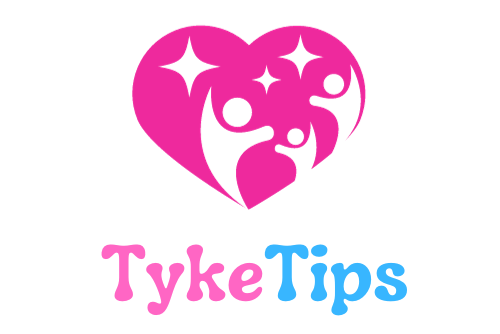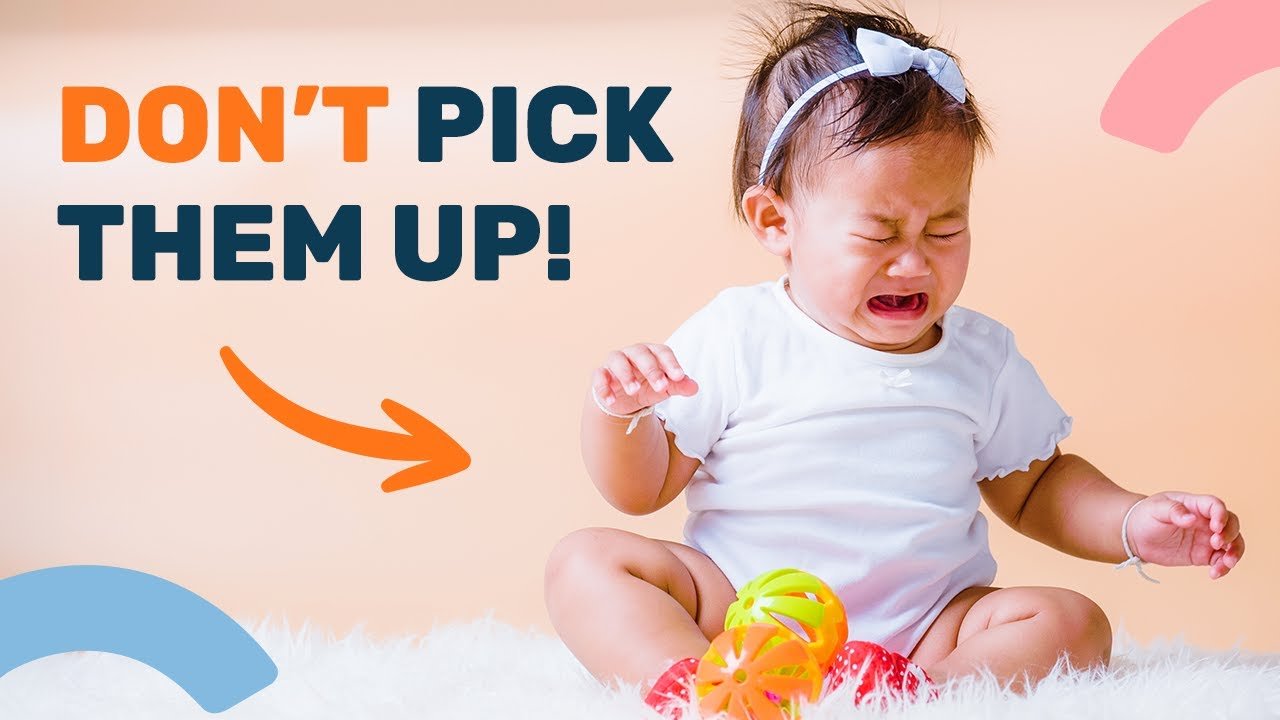Are you feeling overwhelmed by your baby’s non-stop screaming? It’s a common challenge that many parents face, but the good news is that there are strategies you can implement to make it better. In this video, Emma Hubbard shares her insights on how to avoid reinforcing the screaming behavior and instead encourage your little one to develop effective communication skills. By understanding what your baby wants or needs, using words and gestures to communicate, and praising their attempts, you can help your child move past the screaming phase more quickly. Remember, it’s just a temporary phase, and with the right approach, you’ll be able to navigate through it together.

Understanding Your Baby’s Screaming
Babies have a natural instinct to communicate their needs and wants, and one way they do this is through screaming. It can be frustrating and overwhelming for parents when their baby starts screaming, but it is important to understand why babies scream and how to address this behavior effectively.
Why babies scream
Screaming is a typical behavior for babies as they have limited ways to express themselves. It is their way of communicating that they need or want something. They have discovered that their actions, especially loud ones like screaming, get their parents’ attention. It is essential to remember that this screaming phase is temporary and part of their development.
Developmental reasons for screaming
Babies go through various stages of development, and their communication skills are still developing. They may not have the ability to speak yet, but they are always learning and adapting. Screaming becomes a way for them to express their needs and wants when they do not have the words to do so. Understanding this developmental aspect can help parents navigate through this phase with patience and empathy.
How screaming can become a habit
While it is natural for babies to scream, it is crucial to avoid reinforcing this behavior. Babies are quick to learn which actions get them what they want. If parents immediately give in to their demands when they scream, babies may develop a habit of screaming whenever they have a want or need. This can hinder the development of more sophisticated communication skills.
Avoiding Reinforcement of Screaming
To prevent screaming from becoming a habit, it is essential to understand the traps and pitfalls that can reinforce this behavior and learn alternative strategies for handling it.
The trap of instantly giving in
When your baby screams, your natural instinct may be to rush over and immediately fulfill their request to make them stop. However, this can unintentionally teach them that screaming is an effective way to get what they want. Instead, it is important to pause and try to understand what your baby is trying to communicate before jumping into action.
Importance of pausing
Pausing when your baby screams allows you to assess the situation and identify their needs or wants. It may not always be obvious, especially with younger babies who may give subtle cues. Take a moment to observe their behavior, such as staring at an object, making sounds, or reaching for something. These cues can provide valuable insight into what your baby is trying to communicate.
Looking for subtle cues
Babies may not have words yet, but they can still communicate through gestures and sounds. Pay attention to their actions and try to interpret their meaning. For example, if your baby is reaching for a ball and screaming, instead of instantly handing it to them, point to the ball and say, “Do you want the ball?” This helps associate words with gestures and encourages your baby to use these forms of communication.
Teaching Words and Gestures
As your baby’s communication skills develop, it is essential to introduce words and gestures to help them express themselves effectively.
Introducing words and gestures
When you understand what your baby wants or needs, use simple, descriptive words while pairing them with gestures. For example, if your baby is pointing to a ball, say, “Do you want the ball?” as you point to it. This helps them recognize and remember words, building their vocabulary before they can speak.
Repetition and familiarity
Repetition is key to language development. By consistently using specific words and gestures, your baby will become familiar with them and start associating them with their desired objects or actions. For instance, repeatedly saying “Teddy” when your baby reaches for their teddy bear helps them associate the word with the toy.
Building vocabulary before speaking
By using words and gestures consistently, you are laying the foundation for language development. When your baby is developmentally ready to speak, they will already be familiar with the words and gestures they have been exposed to. This familiarity enables them to effectively communicate their needs and wants.
Effective Communication Methods
While babies may rely on crying and screaming initially, it is important to encourage alternative forms of communication to reduce their dependence on crying and screaming.
The role of gestures
Gestures play a crucial role in bridging the gap between preverbal communication and speech. Encouraging your baby to use gestures like raising their arms when they want to be picked up or pointing when they want a toy provides them with an effective means to express themselves.
Gestures as a bridge to speech
By using gestures, your baby learns that communication can be done without resorting to crying or screaming. Over time, they will realize that these quieter methods effectively convey their needs and wants. This gradual transition from crying to using gestures sets the stage for further language development.
Reducing reliance on crying and screaming
Through consistent use of words, gestures, and positive reinforcement, your baby will gradually reduce their reliance on crying and screaming as a means of communication. Encouraging their attempts and responding to their gestures and sounds shows them that their efforts to communicate are understood.
The Power of Praise
Praising your baby’s attempts at communication is a powerful motivator that promotes further development of their language skills.
Importance of praising attempts
When your baby attempts new gestures or sounds, celebrate their efforts. Respond by giving them what they want or reinforcing their attempts to communicate. This positive reinforcement encourages them to continue using gestures and sounds as an effective means of communication.
Responding to gestures and sounds
When your baby uses a specific gesture or sound to convey a need or want, respond accordingly. For example, if they raise their arms to be picked up, extend your hands and say, “Do you want to go up?” As you lift them, reinforce this by saying, “Up, up, up.” This promotes their understanding that their attempts to communicate are successful.
Motivating further communication
By praising your baby’s efforts and responding to their communication attempts, you motivate them to continue developing their language skills. They learn that they can effectively convey their needs and wants through gestures and sounds, reducing their reliance on crying and screaming.
Taking a Pause
Taking a pause in your response to your baby’s cries or screams is key to promoting effective communication and language development.
Understanding the communication
By pausing and understanding what your baby is trying to communicate, you can respond more effectively. This allows you to use words and gestures that address their needs or wants, fostering their language development.
Applying words and gestures
After understanding their communication, respond by using specific words and gestures that match their needs or wants. This consistent application of words and gestures reinforces their understanding and encourages them to further develop these skills.
Promoting language development
Consistency in using words, gestures, and positive reinforcement promotes language development in your baby. Over time, they will transition from relying on crying and screaming to using effective communication methods. Parents play a crucial role in supporting and nurturing this language development.
Progress and Development
Transitioning from crying to more effective communication methods is a gradual process that requires consistency and repetition.
Gradual transition from crying to words
Your baby’s transition from crying to using words and gestures will take time and practice. Through consistent input and repetition, they will gradually learn the meaning behind words and gestures and become more proficient in their use.
Consistency in input and repetition
To support your baby’s language development, it is crucial to use specific words and gestures consistently. Repetition helps them recognize and remember these words and gestures. The more frequently they are exposed to these language cues, the faster they will grasp their meaning.
Encouraging language skills
By consistently using words, gestures, and positive reinforcement, you encourage your baby to further develop their language skills. Celebrate their progress and efforts, as this motivates them to continue communicating effectively.
Passing of the Screaming Phase
It is important for parents to understand that the screaming phase is temporary and part of their baby’s development.
Understanding the temporary nature
The screaming phase is age-appropriate behavior, and it will eventually pass as your baby continues to develop their communication skills. Remember that this is a phase of growth and adaptation.
Knowing the progress made
Reflecting on the progress your baby has made in developing their communication skills can provide reassurance. Recognize and celebrate the milestones they have achieved, whether it’s using specific gestures or attempting new sounds.
Reassurance for parents
As a parent, it can be challenging to navigate through the screaming phase. However, by understanding the temporary nature of this phase and actively supporting your baby’s communication development, you can provide reassurance and confidence that your child is progressing as expected.
10 Additional Techniques for Encouraging Speech
In addition to the strategies mentioned above, there are several techniques you can employ to encourage your baby’s speech development. These techniques focus on creating a supportive and language-rich environment for your child. Here are ten additional techniques:
- Technique 1
- Technique 2
- Technique 3
- Technique 4
- Technique 5
- Technique 6
- Technique 7
- Technique 8
- Technique 9
- Technique 10
Conclusion
Understanding and addressing your baby’s screaming is crucial for promoting their language development and effective communication skills. By avoiding reinforcement of screaming, teaching words and gestures, and using praise as a motivator, you can guide your baby through this phase and promote their transition from crying to effective communication. Remember, it is a gradual process, but with consistency and patience, your baby will develop essential language skills. Embrace the journey and celebrate their progress along the way.

